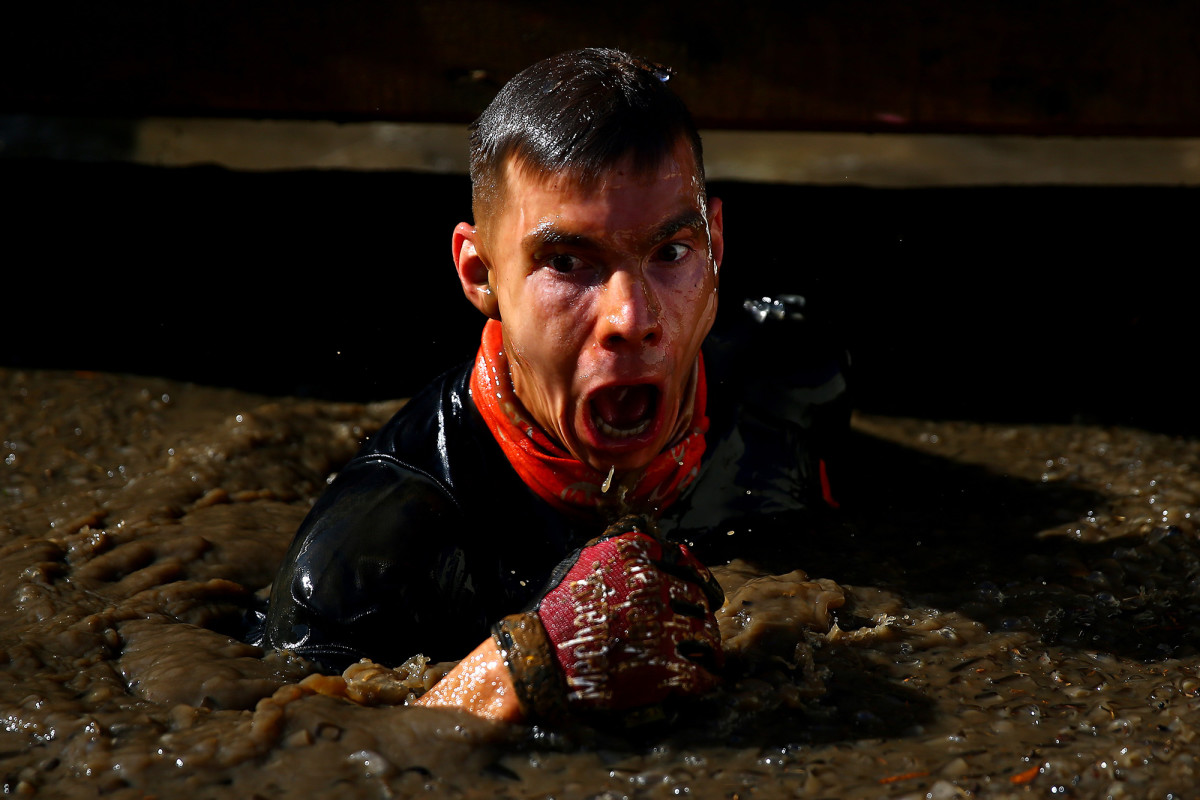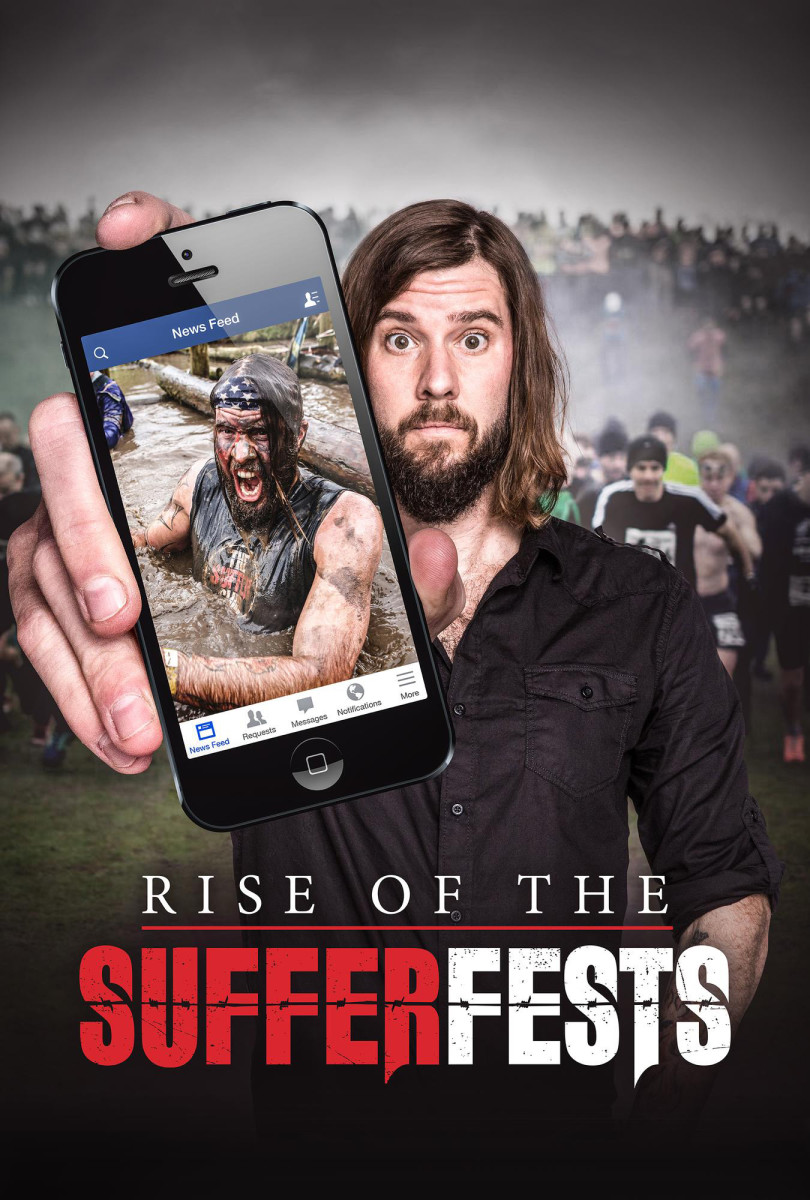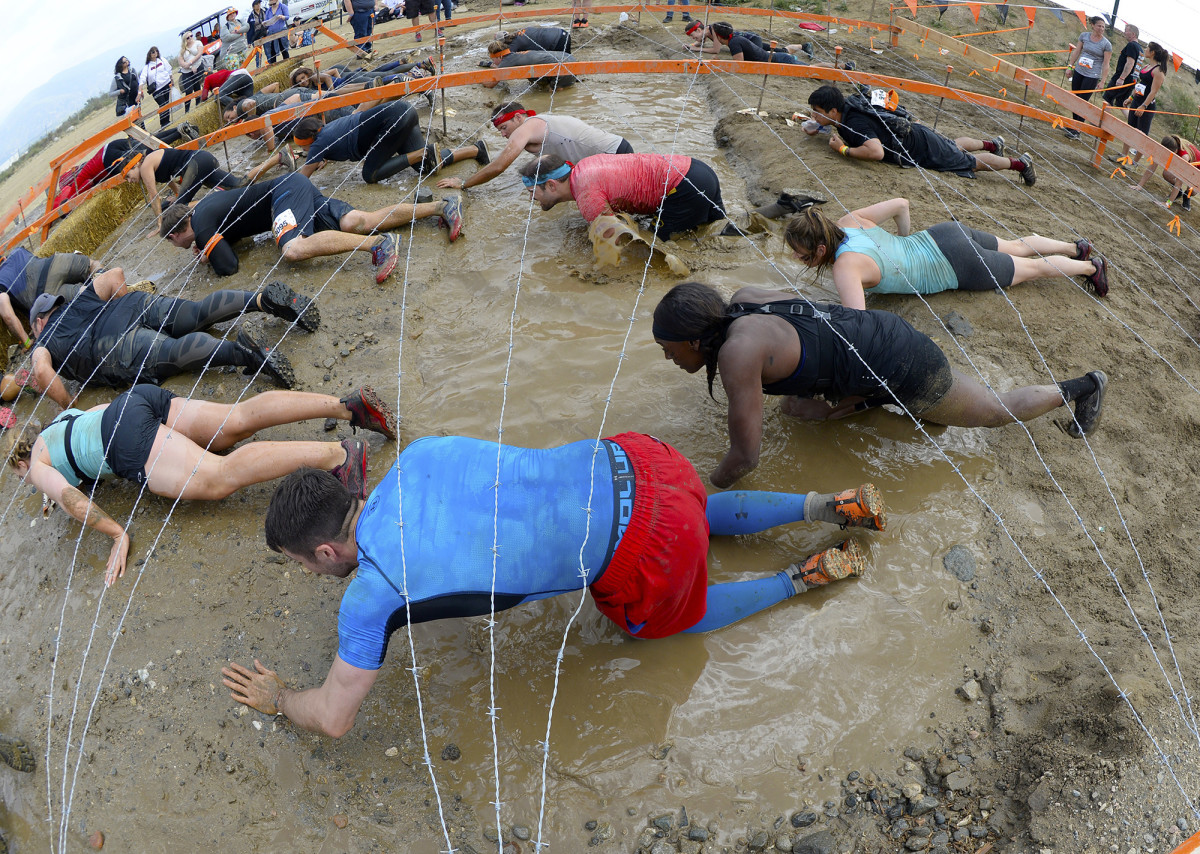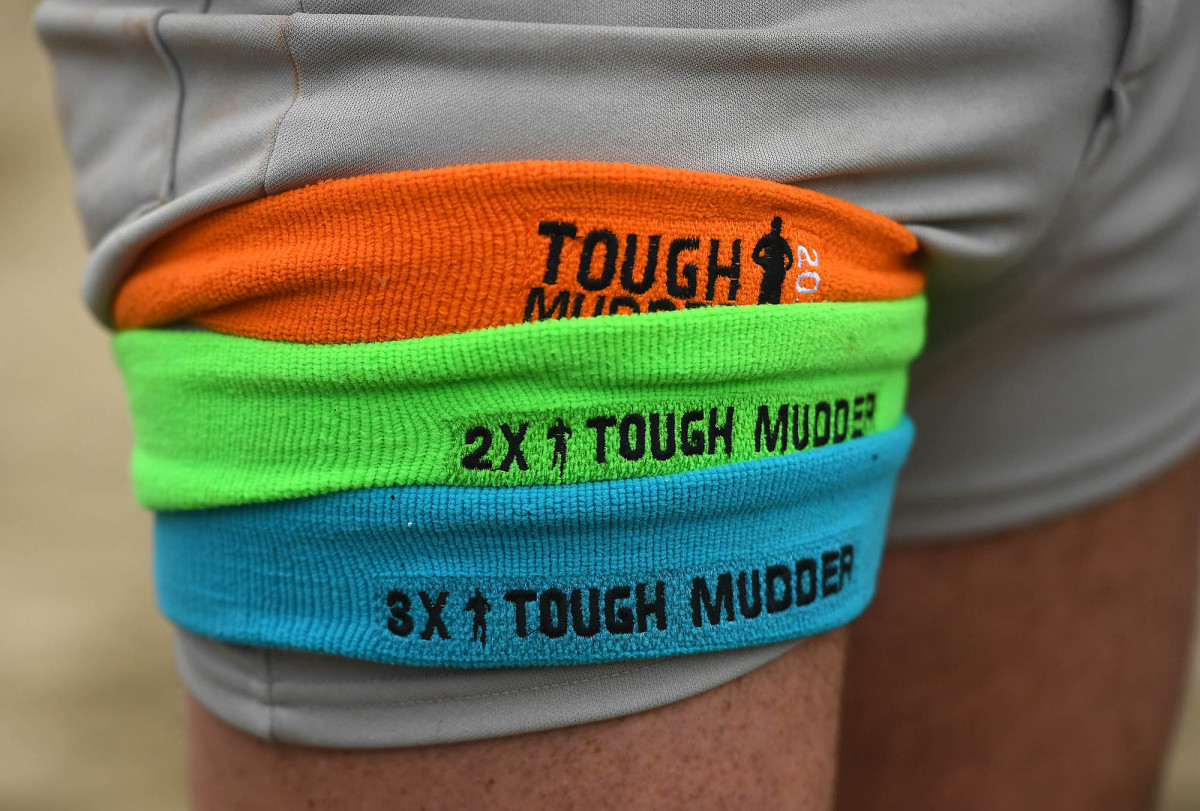Why do people pay to suffer through obstacle course races? Documentary seeks to find out

Talk about a guy who owns his beat. Scott Keneally wrote the 2012 Outside magazine story exploring the feud between Billy Wilson, founder of Tough Guy obstacle race in Staffordshire, England, and Will Dean, who, after paying a visit to one of Wilson’s races and taking copious notes, introduced the Tough Mudder series in the U.S. seven years ago. Keneally also cast a spotlight on how extensively—some might say shamelessly—Dean borrowed from Wilson in coming up with his own event.
That article, one of the best ever executed on this rising sport, is now bookended by Keneally’s mud-spattered piece de resistance. His 2016 documentary, Rise Of The Sufferfests, poses questions about obstacle racing which its rowdy, whooping participants may or may not ask themselves as they are shocked, frozen, exposed to tear gas and otherwise abused: Why am I paying to do this? What is the appeal of risking broken bones and hypothermia?

“Is it so Joe from accounting can look like Rambo on Facebook?” asks the likeable Keneally, our narrator, whose droll appearances throughout the film give it a fun boost. “Are we that narcissistic? Is life too comfortable? Or have we all lost our goddam minds?”
The answer to all those questions is, of course: yes. To plumb them in more depth, Keneally calls on a fun, formidable panel of experts—from waterman/demi-god Laird Hamilton to Brett McKay, proprietor of the website The Art of Manliness, to experiential journalist and “human guinea pig” A.J. Jacobs, who cast a skeptical eye on Tough Mudder’s introduction of a “tear gas” obstacle three years ago.
“What’s coming next?” he inquires. “Poison darts? Machetes to the face? Acid in the eyes? Disembowelment?”
One of the film’s strengths is that it’s not propaganda. Keneally allows Jacobs and others ample time to question the point, the usefulness, of obstacle racing.

“In a lot of ways,” contends McKay, “it’s sort of masturbatory.”
But the upsides, the undeniable appeal—in eight years obstacle racing has burgeoned into a half-billion dollar industry—are given more than equal time. While our various screens and smartphones have given rise to an unprecedented level of global connected-ness, they’ve also left us, isolated, lonely—craving authentic experience.
“We don’t get scars anymore,” says documentarian Morgan Spurlock. “We get paper cuts.”
“I tried to take a 360 degree view of this phenomenon,” Keneally told me, during our recent conversation. “Because I felt like it was a lens into modern life. It’s not just a movie about mud.”
Obstacle Course Racing moves one step closer to becoming an Olympic sport
SI: Returning to your basic question: What is about these ordeals that keep people coming back to them? Do you ever settle on a single, boiled down answer for that?
Scott Keneally: I think a lot of people get into this for an ego boost, and the badass photo. But what draws them in, and keeps them coming back, is that feeling of connection with strangers.
So much of our lives happen through the filter of a screen, and I think there’s something fundamentally missing. There was a time in this country when community was much more an organic part of people’s lives. Like barn-raisings. If a friend was in need, having relationship trouble, or work trouble, we would get together and talk to them about it. Now we just shoot texts to each other, communicate that way, and I think there’s something lost in the translation.
I think iPhones and smart phones have isolated us in an unprecedented way. We can check out of any conversation, at any time, checking our phones, seeing if we got a text. And I think that’s pretty f---ed up: our attention spans, our ability to really immerse ourselves in relationships with other people, are being stilted by a screen.
SI: And you can’t take a screen out on the course with you.
SK: Actually, I have broken a phone on a course.
SI: The documentary spans three years, and the challenge you faced getting it funded and produced, becomes part of the story. Discuss that drama.
SK: I knew I had a great story, with some very compelling characters. And I’d worked in commercials and music videos, as a writer, for my whole career. But I didn’t have any background in documentary filmmaking.

SI: At one point you say your kick-starter was basically a non-starter.
SK: It took me three hours after was launched to realize it was dead in the water. Those were the worst, most painful 40 days of my life. It was middle class panhandling. But I had already declared to the universe that I was making this movie. Quitting was not an option.
So I pushed forward, begged, borrowed and finally found a producer really excited about the idea, who helped get it to the finish line. I didn’t expect to be part of the narrative in this movie at all. Had all gone according to the original plan, the production time would’ve been one year, instead of three, and it would’ve been a totally different story, more like PBS special, about this industry. This is obviously more of a human story, a coming-of-age story.
SI: With Billy Wilson stealing numerous scenes. There are eccentrics, and then there is Wilson, a.k.a. Mr. Mouse, a.k.a. the Madman of the Midlands, the godfather of Obstacle Course Racing, the inventor and founder of the 27-year-old Tough Guy race in Staffordshire, England, who requires entrants to sign a “Death Warrant” before participating.
More on this guy, and his race. Is it, pound for pound, the toughest you’ve done?
SK: Yeah absolutely. Well, World’s Toughest Mudder is its own thing, with its own set of problems, when you’re out there for 24 hours. But as far as the terror, and sheer brutality of the course, nothing compares.
SI: When not grooming his mustache, Mr. Mouse goes into a kind of reverie about the pleasure he takes in putting racers in the netherworld between life and death, because they’ll be so grateful afterward. Have you ever chronicled a more unique character?
SK: One of the reasons I stuck with this, through the dark days of production, where I wasn’t sure we were going to be able to make the film, because I believe so much in him as a character and what he represents. It’s as if he fell out of a wormhole into an entirely different era, and operates in multiple realities at once. He’s a mad genius. It’s like, I feel Daniel Day Lewis can play him in a movie someday.

SI: Among the compelling and insightful experts you draw out is the author and writer Hannah Rosin, who notes, trenchantly, that we live “in an age of performed identity,” that everybody’s putting out for consumption “a performed version of themselves on social media.”
Riff a little, please, on how obstacle racing latched on to the coattails of social media—Facebook in particular.
SK: Consider this idea of experiences as the new luxury goods. Facebook, Twitter, Instagram—there are all these platforms for us to share our experiences. So what we do on weekends is in some ways more important than the car we buy or what we drive. It says more about who we are deep down.
If there was no Facebook, obstacle racing probably wouldn’t be a thing. It’s such a driver for so many people to come away with that hero profile picture, myself included.
Back when Tough Mudder came about (in 2010), there was so much less advertising on Facebook, so it was really key to reach these customers, and now even if you spend the money you can’t really reach the customer, because we’re so inundated with so many ads.
There was a brand called BattleFrog that spent untold millions trying to launch, never got any traction, never got like, a thousand people in a race. They sponsored the frikkin’ Fiesta Bowl, had a million in prize money. They lost hundreds of thousands every race. They folded. At this point you can’t buy your way in.
SI: Speaking of social media, Amelia Boone—arguably the face of this young sport—poses an interesting, discomfiting question: Would people still be doing obstacle races if there was no Facebook, no photos—if no one else knew they were doing it?
SK: I put the meme of that on our Facebook page—we have a really active community of 30,000 fans. 99% of the people said, “Of COURSE I’d still do it!”
SI: What next for this sport? I’m not getting the sense that it’s going to fade away.
SK: I think it will be headed eventually to colleges and high schools, and it will be a huge, international sport.
The formatting will have to standardized, and a lot of other things people love about Spartan race—the unknown—will have to be [standardized]. But I think the event’s sticking around, until there’s some widespread famine, or some other actual, real-life struggle for white people, I think it’ll be around.
Best shoes for obstacle races, mud runs, Spartan Races, Tough Mudders and more
SI: I was surprised, during my sole experience with Tough Mudder, a few years back, how much I liked hanging out at the top of “Everest,” helping people up. It feels good to help someone over the wall.
SK: It does, and when you’re being helped—I mention this in the epilogue—at World’s Toughest Mudder, you’re out there for 24 hours, you’re just beat down, and you just can’t imagine getting over then next wall. But I had that goal, to go 50 miles. There were laps were I was pretty useless, and people were helping me, even though they had their own goals, right? And I was just so grateful. Everyone has a finite amount of energy to spend on the course, and for them to help me out—it really fosters this kind of beautiful connection with a stranger.
